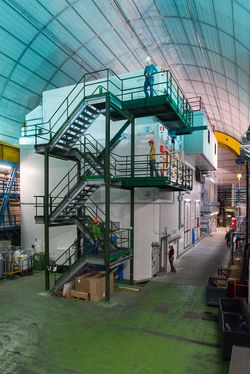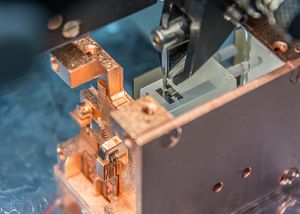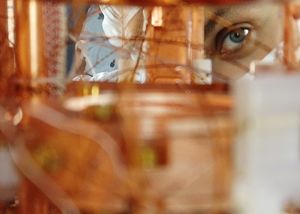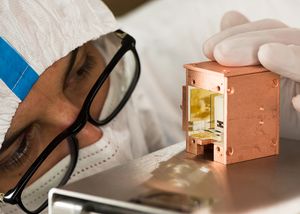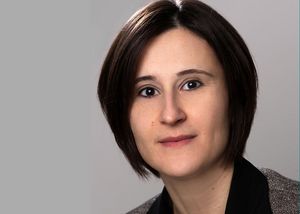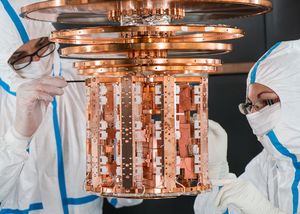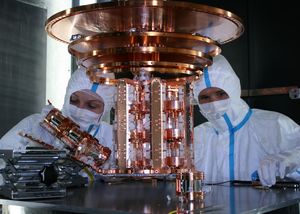According to cosmological observations, ordinary matter, of which atoms, all living beings, stars, planets and galaxies consist, accounts for only 5 percent of the total matter in the universe. A larger portion by far, around 25 percent, is made up of so-called dark matter. It is, however, not yet clear what this consists of.
Our galaxy, the Milky Way, is surrounded by a large accumulation of dark matter. Its enormous mass has had a crucial impact on the evolution of the galaxy.
A number of well-founded theories state
- that dark matter consists of particles that exert gravity and
- interacts with visible matter - albeit very weakly.
If these dark matter particles exist, it should be possible to observe them from Earth with suitable measuring devices.
Scientists working on the CRESST experiment are on the lookout for dark matter. CRESST is an acronym for “Cryogenic Rare Event Search with Superconducting Thermometers”. The experiment is being conducted by a European research collaboration headed by the Max Planck Institute for Physics (MPP).
Tracking down dark matter with crystal detectors
The CRESST experiment is located in the underground laboratory below the Gran Sasso massif (Laboratori Nazionali del Gran Sasso, LNGS) in Italy. It comprises high-sensitivity detectors that react when a dark matter particle impinges on an atomic nucleus in the detector material.
Since a reaction between these particles and ordinary matter is an extremely rare event, researchers expect only a small number of observable events per year. In order to discover them with a high degree of certainty, the scientists have developed a special method.
The instruments consist of ultrapure, scintillating calcium tungstate crystals (CaWO4) whose operating temperature is at almost -273 degrees Celsius, i.e. close to absolute zero. When a dark matter particle collides with an atomic nucleus, the temperature in the crystal increases by around one millionth of a degree.
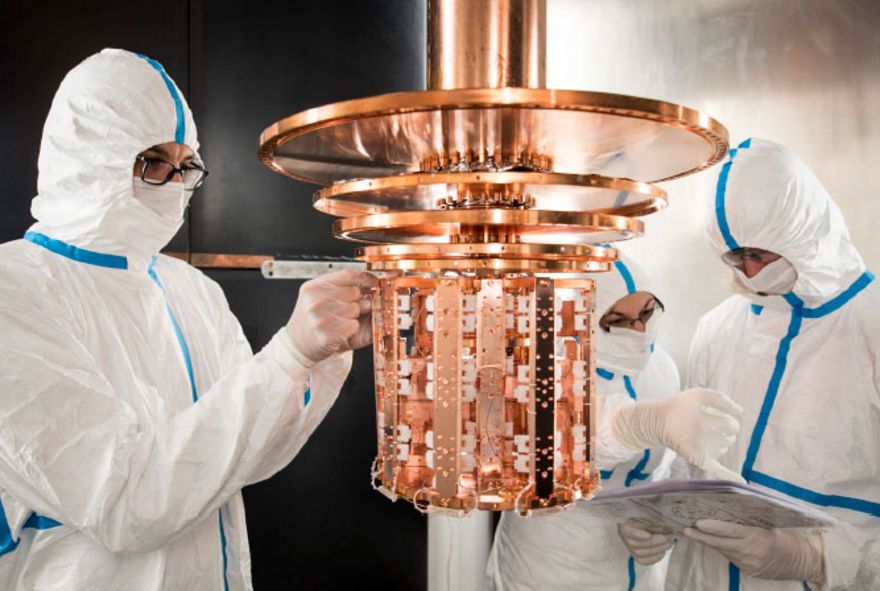
High-sensitivity sensors make all the difference
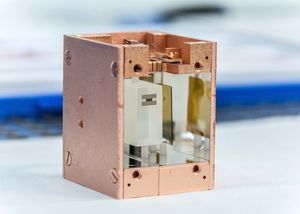
Highly sensitive thermometers in the detector measure this absolutely minute difference. In addition, the particle-particle interactions generate flashes of light in the crystal. The light particles – or photons, as they are known – are measured by a sapphire and silicon sensor.
The second signal has the important task of identifying which particle species has triggered the reaction. Signals caused by dark matter can thus be reliably distinguished from the radioactive background.
This technology is the basis for one of the most sensitive particle detectors ever built. In their search for dark matter, physicists can thereby venture into still unexplored mass regions. These properties make CRESST the top experiment in the search for particularly light particles of dark matter.
With its expertise in detector development, low-energy technology and data analysis, the MPP is playing a leading role in the CRESST research collaboration.
CRESST at the MPP
Phone number: +49 89 32354-extension
| name | function | extension | office | |
|---|---|---|---|---|
| Banerjee, Heerak | Postdoc | banerjee | 473 | A.1.59 |
| Bento, Antonio, Dr. | Senior Scientist | bento | 309 | A.1.49 |
| Bertolini, Anna | PhD Student | anbertol | 327 | A.1.59 |
| Cipelli, Eleonora Rebecca | PhD Student | ecipelli | 473 | A.1.49 |
| Di Lorenzo, Stefano, Dr. | Postdoc | sdilo | 316 | A.1.55 |
| Dominsky, Felix | PhD Student | dominsky | 569 | A.1.59 |
| Fuchs, Dominik | PhD Student | fuchsdom | 364 | A.1.59 |
| Guillaumon, Pedro Vinicius | Postdoc | pguill | 270 | A.1.51 |
| Hauff, Dieter | Senior Scientist | hauff | 266 | A.1.55 |
| Langenkämper, Alexander, Dr. | Postdoc | langenk | 270 | A.1.51 |
| Mancuso, Michele, Dr. | Senior Scientist | mancuso | 756 | A.1.55 |
| Mauri, Beatrice, Dr. | Postdoc | bmauri | 352 | A.1.57 |
| Oswald-Kloi, Melanie | Secretary | moswald | 364 | A.2.43 |
| Petricca, Federica, Dr. | Senior Scientist | petricca | 309 | A.1.53 |
| Pröbst, Franz, Dr. | Senior Scientist | proebst | 270 | A.1.51 |
| Pucci, Francesca | PhD Student | frapucci | 218 | A.1.57 |
| Werner, Diana | Secretary | dwerner | 364 | A.2.43 |
| Zanirato, Marco Maria | Student | zanirato | 473 | A.1.49 |
| de Santis, Alessio Ludovico | PhD Student | ludovico | 218 | A.1.57 |
Results on light dark matter particles with a low-threshold CRESST-II detector
G. Angloher et al. (CRESST Collaboration)
Eur. Phys. J. C 76, 25 (2016)
Limits on Momentum-Dependent Asymmetric Dark Matter with CRESST-II
G. Angloher et al. (CRESST Collaboration),
Phys. Rev. Lett. 117, 021303
Beta/gamma and alpha backgrounds in CRESST-II Phase 2
R. Strauss et al. (CRESST Collaboration)
J. Cosmol. Astropart. Phys. 06 (2015) 030
A detector module with highly efficient surface-alpha event rejection operated in CRESST-II Phase 2
R. Strauss et al. (CRESST Collaboration)
Eur. Phys. J. C (2015) 75:352
Results on low-mass WIMPs using an upgraded CRESST-II detector
G. Angloher et al. (CRESST Collaboration)
Eur. Phys. J. C 74, 3184 (2014)
